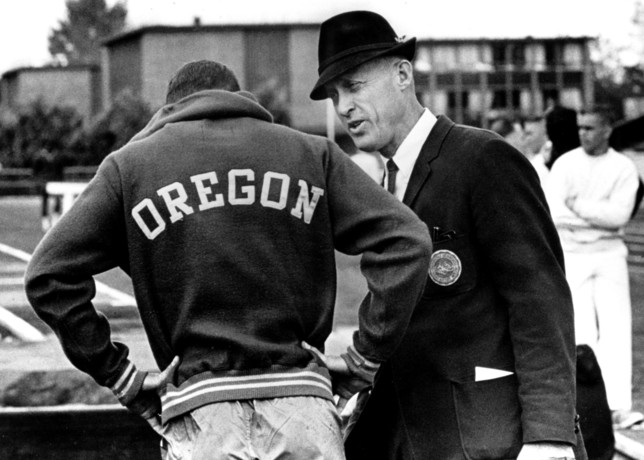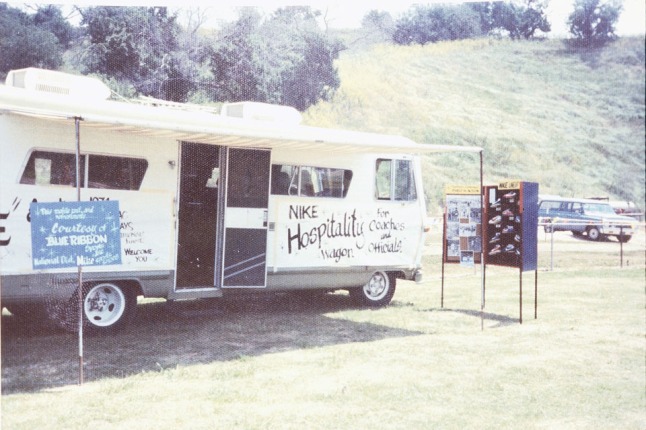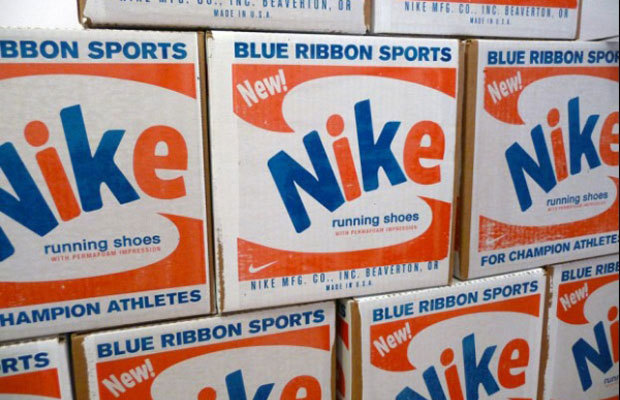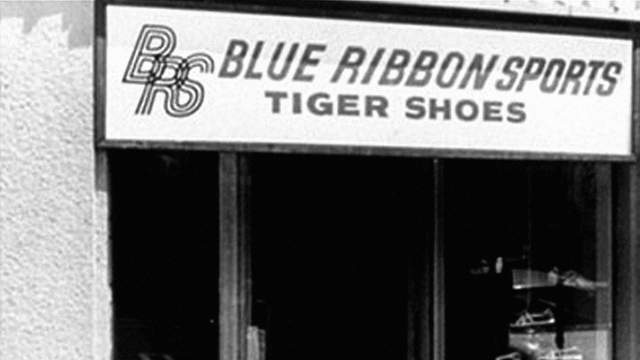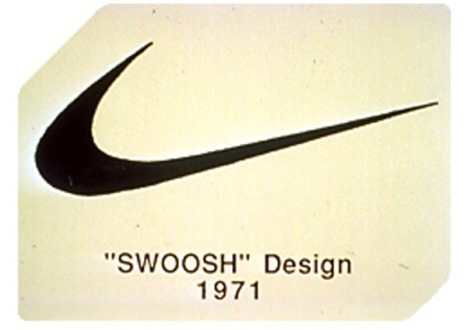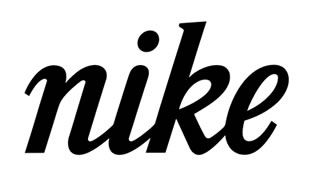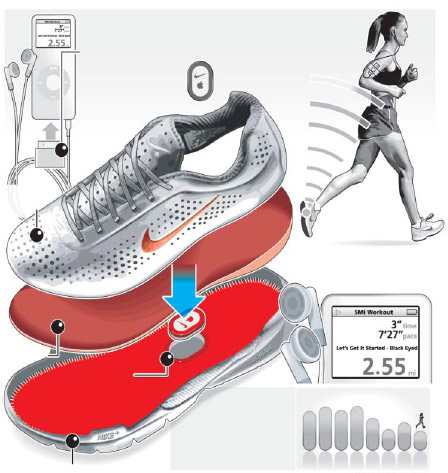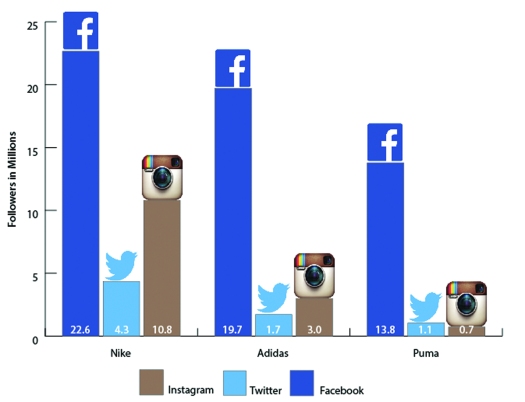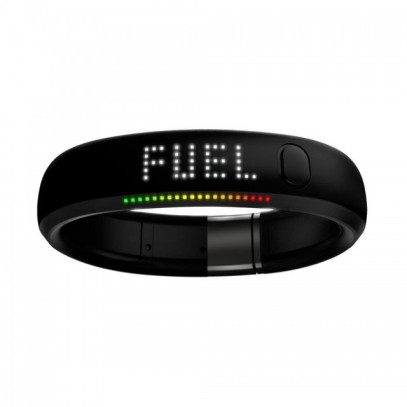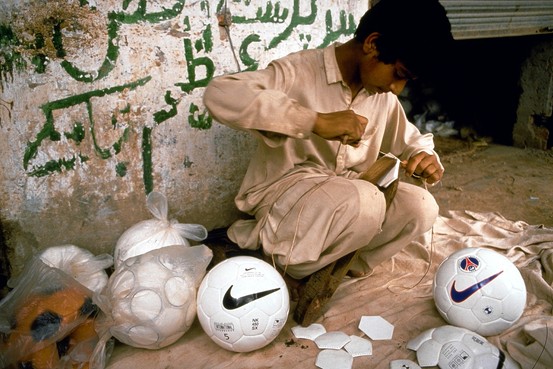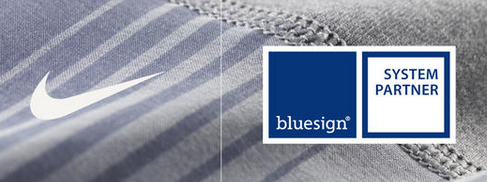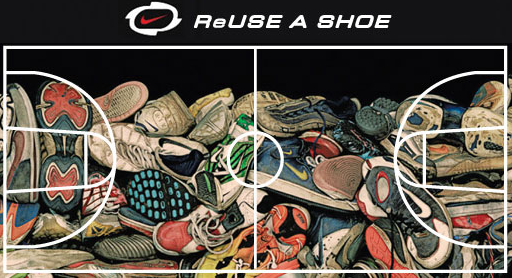Founded by two visionary men who pioneered a revolution in athletic footwear, Nike has redefined the sportswear industry. In existence for over 40 years, today, Nike is the largest seller of apparel, athletic footwear, and equipment in the world. Like many companies of that era, Nike had a humble beginning.
Nike’s Origin
Bill Bowerman (right) with an athlete from University of Oregon
Bill Bowerman, a nationally respected track and field coach at the University of Oregon, was constantly seeking ways to give his athletes a competitive advantage. Phil Knight, a talented middle-distance runner from Portland, had enrolled at Oregon in the fall of 1955. In span on time while competing for Bowerman’s track program, they became best friends and both shared a view that the athletes deserved better running shoes than those available in the U.S. market at that time. Knight earned his MBA in finance from Stanford University after graduating from Oregon. It was here that he wrote a paper proposing quality running shoes be manufactured in Japan to compete with more established German brands.
Initial Days for Nike
Knight made a cold-call and persuaded the manufacturer of Tiger shoes – Onitsuka Co. in Kobe, Japan, to make him a distributor of Tiger running shoes in the United States. Having received the first set of sample shoes, Knight sent several pairs to Bowerman, hoping to make a sale.
Bowerman, instead, stunned Knight by offering to become his partner, and to provide his design ideas to Onitsuka Co. They established Blue Ribbon Sports by pledging $500 each and placed their first order of 300 pairs of shoes in January 1964. In 1966, BRS opened the first retail store in Santa Monica, California.
The First BRS Store (Santa Monica, California)
In those days, Bowerman would often rip apart the Tiger brand shoes to see how he could make them better and lighter. He used to take help from university runners to test his creations and collect their feedback.
After reaching $ 1 million mark in sales, the Blue Ribbon Sports parted ways with Onitsuka Tiger, and began to design and subcontract its own line of shoes. With change in strategy, Knight thought it prudent to change the name of the company. The brand Nike was introduced in 1972 to this end under BRS. The SWOOSH logo, a graphic design created by Caroline Davidson in 1971 for just $35, represents the wing of the Greek Goddess NIKE.
SWOOSH Original Design
In 1973, BRS signed its first endorsement pact with a professional athlete and ATP tennis star Ilie Nastase. Endorsements have, ever since, played an essential role in the marketing activities of Nike. In 1978, once the name Nike and Swoosh were synonymous, the company was eventually renamed to Nike.
The First Nike Logo
The Innovation Curve
The company’s innovation debut was in 1979 when it introduced air cushioning technology. The shoes featured a NASA engineer invented gas-filled plastic membranes that could be inserted into the sole for comfort during running. It kept up the revenue of Nike for long. But in mid 1980s the revenue started to dip mainly because the management did not take note of the aerobics boom. Nike’s competitors had, however, by then developed their business in this segment.
In a bid to regain its edge Nike, in 1987, launched a new product named Air Max. The shoes had sole with two interdependent bags, having compressed air inside, which helps in absorbing shocks during running and jumping. In order to suit individual needs, Nike also customized the product by inserting bags of different sizes depending on the height and pressure exerted by customers.
The marketing campaign for Air Max was supported by TV ad having Beatles’ Revolution as the soundtrack (Beatles song was being used in a TV ad for the first time). Riding on the success of this campaign, Nike launched an even more empowering series of ads a year later with the tag line “Just do it”. The campaign featured Walt Stack, then 80-year old icon, running across the Golden Gate Bridge.
Another campaign had three advertisements featuring young sportsman Bo Jackson who campaigned on the benefits of a new cross-training pair of Nike shoes.
Nike released new versions of Air Max every year after it launched its air cushioning technology. Currently, Nike has nearly 40 models under this brand name.
Nike’s Current Portfolio:
NIKE’s brand portfolio also includes several brands developed or acquired by it. Most famous of them are
- ‘Jordan’ – targets basketball-related products & named after basketball superstar Michael Jordan
- ‘Hurley’ – youth-focused brand targeted at action sports like surfing, skateboarding and many more
- ‘Converse’ – a wholly owned subsidiary brand dealing in apparel, casual sneakers, and accessories
Targeting:
- Broadly, NIKE has products for people from all age-groups: right from newborns & kids to teenagers, adults and even the old. For example, any new revolutionary designed footwear is generally released for all age groups. However, its core focus is on people in the age group of 18-35 years old.
- By opening women’s-only stores in California, Shanghai, etc., Nike has started expanding its presence in the women apparel market because of its untapped potential
Positioning:
NIKE positions itself as an athletic-wear brand that believes in an individual’s ability in being an athlete.
Differentiation:
- The ‘Swoosh’ logo and ‘Just Do It’ slogan directly create a sense of brand recall for NIKE.
- NIKE has differentiated itself from others by directly appealing the inner self of an individual as some of the common phrases people relate with NIKE are ambition, motivation, emotion & performance which are a testimony to the brand’s equity.
Beyond Sportswear
In due course, even the hi-tech Air Max technology was found to be inadequate to entice customers. Nike needed something that would differentiate it in the long run. It had to be very appealing and also at once very distant from the core business. The focus was on gadgets. It had less to do with shoes and more to do with athletes. Nike’s sales philosophy – if you have a body, you are an athlete – had enticed everybody who wanted to think of himself/herself as an athlete or wanted to get more athletic.
Nike Mission Statement
Nike introduced its first mass produced gadget, Nike + iPod Sports Kit, in the US market in 2006. It was a tool to measure the distance and speed of a run or a walk and was built on a virtually flawless partnership strategy. Nike was actually selling just a small electronic chip that had to be inserted in the shoe and a wireless connection device that had to be plugged to an iPod. All the calculation, storage, and integration was done by the iPod. It paved the way to a truly innovative future of the company.
An upgraded product, Nike + Sportband Kit (released in April 2008), no longer needed an iPod and could be connected to the computer directly to download the results. All the products designed post release of this kit were an enhancement of this concept. A Nike + Sportwatch was also introduced in combination with the chip.
In September 2010, Nike introduced a running app to be used in the latest iPhones. The running app used the phone’s accelerometer and so there was no need of a chip in the shoe. Miles ahead of its competitors with a user community of more than six million people, Nike products were not only dressing up the athletes but also coaching the masses who wanted to be like athletes. The users of Nike+ can not only store and review their results in their computers or devices but also analyze and share them within the community.
Through apps, the customers are now more close to Nike. It can study them and communicate with them conveniently. In contrast, a regular apparel seller can only expect to meet a customer in the store when the customer has already made a decision to go and shop there, even after spending huge amounts on advertising. Thanks to its technology leap, Nike was able to reduce advertising expenses by 40 per cent without compromising on efficiency and results.
Nike’s Social Media Initiatives
In 2008, Nike created its Facebook account. Today, Nike maintains a Facebook page for each sub-brand, running product specific promotions, featuring events in a particular sporting activity, and also providing information on the latest game of endorsed athletes. For example, a Facebook user who desires to know more about the latest football shoes or game can turn to Nike Football Facebook page.
Pairing up with Apple Inc. – a company known for its innovative products, helped Nike by increasing brand awareness and also reaching out to customers who were still in two minds about choosing their brands by bringing into its fold the Facebook fans of Apple. The tie-up with Apple was Nike’s realization that most runners will use iPods or iPhones to listen to music while jogging. Apple’s iPhones and iPods thus came pre-installed with Nike+ app. With this, iPhone/iPod users can map out their running route and later share it with their Facebook friends.
Nike iPod Sport Kit
Carrying forward the same strategy, Nike has separate Twitter handles for each of its sub-brands, sport category, countries and even cities. A key differentiator for NIKE is an independent customer support handle which aims to resolve customer issues at the highest priority and thus helping promote the image of the brand.
By numbers, Nike is ‘The most followed brand’ on Instagram. Almost all the media Nike has uploaded on the social media uses exotic landscapes with athletes and a motivational taglines to inspire and connect with their target audience. The brand’s action-oriented image of positivity aims to instill self-confidence in the minds of its followers.
Nike’s Presence on Social Media
One of the company’s latest products is Nike FuelBand, a wristband that tracks user’s wrist movement, and calculates the amount of energy spent during a day by predicting the activities performed and the approximate amount of calories burned. However, because 100 calories burned by a person who weighs 100 kg is not the same as the same amount of energy burned by a person who weighs 50 kg, the number of calories spent is not a robust index of energy used. So, to create a platform where a group of people can compare their energy spent, Nike has come up a new index called Nike Fuel.
Nike FuelBand
Compared to products by other specialised players like Jawbone and Fitbit, FuelBand is rather primitive. However, its biggest selling point is the Nike + Fuelband Community on Facebook. The social media site is used by Nike to motivate its users to get fit. On this page, Nike sets a new challenge for its followers every week. It is here that Nike Fuel comes into play. Users can compare their accumulated Nike Fuel and comment on the challenge, motivate each other, share their difficulties and get suggestions on how to improve the general level of fitness.
Environmental & Social Responsibility
Nike’s strategy to outsource the production to the “third world” countries enabled it to produce lower cost products and channel these savings into innovative designs and marketing campaigns. However this strategy backfired severely when during the 2000s. Problems start in 1991 when activist Jeff Ballinger publishes a report documenting low wages and poor working conditions in Indonesia. For almost half a decade, Nike faced a series of public relations nightmares involving underpaid workers in Indonesia, child labour in Cambodia and Pakistan, and poor working conditions in China and Vietnam. As Phil Knight quoted in a speech in May 1998 to National Press Club, “the Nike product has become synonymous with slave wages, forced overtime, and arbitrary abuse.”
A Pakistani boy stitches Nike soccer balls in 1996 (Source: Life Magazine)
How, Nike, a company that had become a poster child for abusive labour practices turned around its image is a case-study in itself. Initially, though, Nike claimed that the factories were owned by independent contractors, it responded to complaints with a factory code of conduct. However, with conditions from the factories far from improving, Nike faced incessant protests. Efforts at promotions became occasion for public outrage and sports media began challenging ambassadors of Nike like Michael Jordan. With demand falling due to abstinence, Nike in 1998, finally buckles under pressure and admitted to the existence of problems. The company announces raising of minimum age of workers, increasing monitoring of its factories and adopting U.S. OSHA clean air standards in all factories. Between 2002 and 2004, the company performed close to 600 factory audits including repeat visits to problematic factories. The company also went a step further by publishing a complete list of factories it contracts with, detailed with conditions and pay at its factories, a first in its industry. The company continues to post its commitments, standards, and audit data as part of its corporate social responsibility reports.
Current Activities
NIKE aims to achieve Zero Discharge of Hazardous Chemicals (ZDHC) by 2020. The following steps have been taken with this goal in picture.
Restricted Substance List (RSL):
Amount of Petroleum Derived Solvents per pair down 96% compared to FY’95, & hazardous waste per pair down 31% compared to FY’05.
Partnership with bluesign® which will help NIKE provide their contract manufacturers with a well-tested detailed list of chemical products which will help them reduce the environmental impacts of their manufacturing processes.
NIKE Reuse A Shoe campaign:
Drop-off locations were decided across US where people could leave out their old shoes which can be recycled by NIKE for products of tomorrow.
The NIKE Foundation:
According to NIKE, “we sought the best investment to end global poverty with the highest returns. We traced poverty back to its roots. Investing in adolescent girls was the unexpected solution to break the cycle of intergenerational poverty and unleash the unlimited potential of adolescent girls on the world.” Hence, NIKE has been launching initiatives for the development of impoverished adolescent girls in countries like Nigeria, Rwanda, Ethiopia, etc.
References:
- http://businesstoday.intoday.in/story/nike-marketing-strategies-global-brand/1/207237.html
- http://www.forbes.com/sites/georgebradt/2014/07/16/rebranding-be-like-blue-ribbon-sports-nike/
- http://xroads.virginia.edu/~class/am483_97/projects/hincker/nikhist.html
- http://www.complex.com/sneakers/2013/02/50-moments-that-changed-sneaker-culture-forever/nike-becomes-nike
- http://www.nike.com
- http://www.sports.ru/tribuna/blogs/sneakermania/693121.html
- http://www.nikeresponsibility.com/report/content/chapter/chemistry
- https://www.facebook.com/nike
- https://twitter.com/nike
- http://www.nukesuite.com/brand-focus-nike-excels-on-social-media/
- http://marketrealist.com/2014/12/an-overview-of-nikes-brand-stable/
- http://media.corporate-ir.net/media_files/IROL/10/100529/nike-gs09/portfolio.html
